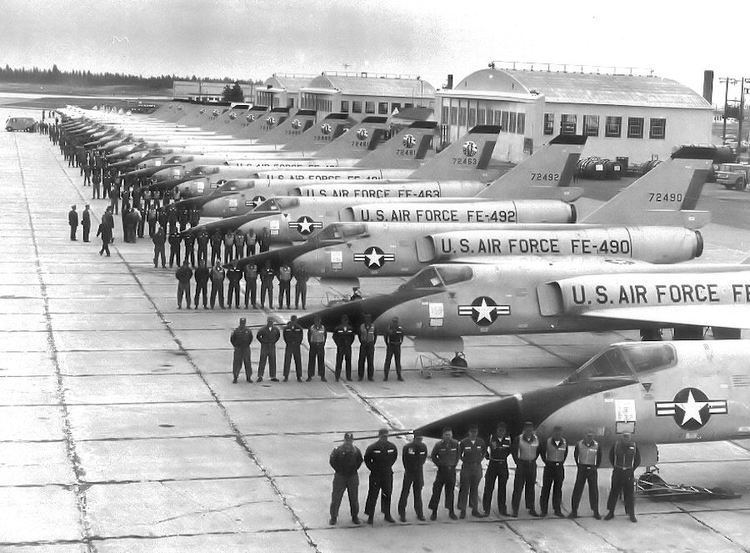Active 1942–1968 | Country United States | |
 | ||
Nickname(s) Geiger Tigers (1955-1963) Megas Gatas [sic] Latin Big Cats | ||
The 498th Fighter-Interceptor Squadron is an inactive United States Air Force unit. Its last assignment was with Air Defense Command stationed at Hamilton Air Force Base, California. It was inactivated on 30 September 1968.
Contents
World War II
it was established in early 1942 as a III Fighter Command Operational Training Unit (OTU), and equipped with a mixture of second-line single engine training aircraft. The squadron upgraded in 1943 with P-47 Thunderbolts for Replacement Crew Training (RTU). It was inactivated in April 1944.
Air Defense of the Pacific Northwest
The squadron was reactivated in August 1955 as a United States Air Force Air Defense Command interceptor squadron, and assigned to Geiger Field, Washington. Its mission was to provide air defense for the Pacific Northwest. It was equipped with F-86D Sabres, and then upgraded to F-102s in 1957 and then to F-106s in 1959. It was the first operational squadron to receive the Delta Dart.
On 22 October 1962, before President John F. Kennedy told Americans that missiles were in place in Cuba, the squadron dispersed one third of its force, equipped with nuclear tipped missiles to Paine Air Force Base at the start of the Cuban Missile Crisis. These planes returned to McChord after the crisis.
On 15 March 1963 two Soviet bombers overflew Alaska and Alaskan Air Command F-102s were unable to intercept them. The response to this intrusion was to deploy ten F-106s from the squadron and its sister unit, the 318th Fighter-Interceptor Squadron to Alaska in what was called Operation White Shoes. However, maintaining these aircraft for an extended period of time put a strain on the 325th wing's combat readiness back at McChord, and eventually a detachment of maintenance personnel was established to maintain the planes in Alaska. The unit got relief from this commitment while it was upgrading its F-106s from the 1st Fighter Wing, which relieved it from March to June 1964. Operation White Shoes terminated in 1965 and the unit's planes returned home.
It moved to McChord AFB in 1963, and to Paine Field in 1966.
It moved to Hamilton AFB, California in 1968 and was inactivated the same day. Its aircraft were reassigned to the 84th Fighter-Interceptor Squadron.
